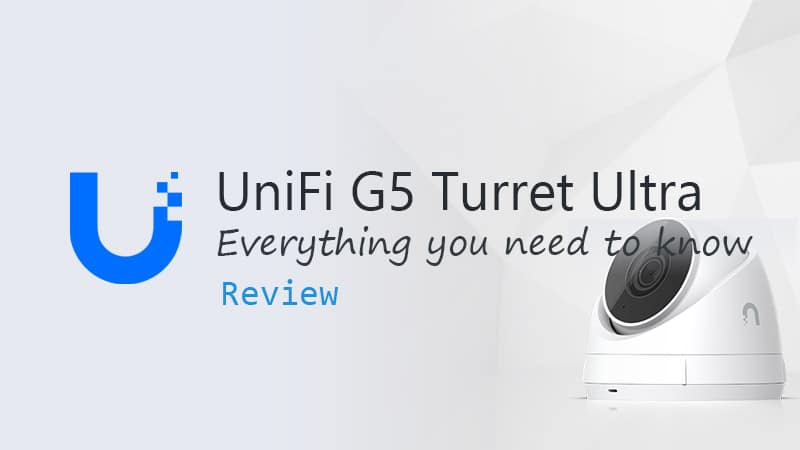In your house you have a great wifi network, the wireless network coverage is perfect and the speed is blazingly fast. But as soon as you step outside into your garden your wireless network signal plummets down and by the time you reach your outdoor lounge set, you will have to switch to 4G. Sounds familiar? With an Unifi Outdoor AP, we can fix this 😉
Read the full UniFi Access Point Comparison in this article
All the Ubiquiti access points compared in one clear overview – updated may 2022
So what are your options to fix this? Adding additional access points into your house and close to the garden won’t do much. The thick exterior walls and glass will reduce the wireless signal simply too much.
The best solution is to place an Outdoor Unifi AP (access point) or place an access point in your shed or garage, the thinner (most of the time wooden walls) won’t reduce the signal too much. But which access point do you need?
Unifi Outdoor AP options
I assume you already have Unifi access points in your house, if not then you really should check out this article first. So what are your options with Unifi to extend your home network into the garden?
Unifi has a couple of full weatherproof outdoor AP’s. They can be placed on a wall or pole and all you need to do is pull a network cable to it. If you have a patio or porch you could also go for a weather-resistant access point.
Power and Network connection
Before we go to the actual Unifi Outdoor AP’s, we first need to solve the power and network requirements. Each access point requires power, now this is something that isn’t a big of an issue in the garden.
The power to the access point is delivered over the network cable. You can simply use a PoE Adapter (Power over Ethernet Adapter) for the access point. Network, on the other hand, is most of the time a bit more difficult. You don’t always have the option to pull a network cable from your switch to the garden.
To solve this issue we can use a mesh network. This way the outdoor access point will connect wirelessly to another Unifi Access Point for the network connection and still be able to function as a normal access point. I have written a complete guide on how to set up a wireless uplink network.
The Unifi Mesh network is great, but if you have the option to pull a network cable from your switch to the garden or garage/shed then this should be your preferred option. A wired connection is always better.
UniFi 6 Mesh

The new Unifi 6 Mesh is the successor of the Flex HD and AC Mesh. It’s the new goto access point for outdoor installations. It can also be used indoors of course, but the UniFi 6 Mesh is IPX5 rated, making it rugged enough to use outdoors.
With the new WiFi 6 802.11ax Wifi network you are capable of reaching a high throughput with your outdoor access point. The 6 Mesh is also the perfect access point to create a wireless bridge or mesh network due to its 4×4 Wifi 6 network.
The new WiFi 6 Mesh access point has better built-in antennas than the older Flex HD model. It comes with a 3dBi antenna gain for 2.4Ghz and a 5dBi antenna gain for 5Ghz. This way you are capable of covering a large area and reaching a higher connection speed.
Read more about the new UniFi 6 access points in this complete UniFi access point comparison.
Unifi Flex HD

This is the latest Unifi Access point, which can be used indoors and outdoors. It’s fully weatherproof and can be mounted on a wall, pole, or base (standing).
The modern design of Unifi Flex HD looks great, this is an access point that you don’t need to hide. Its sleek design allows you to place it close to the users.
With a price of around $180, it’s one of the most expensive options, but you will also get the best performance and the best-looking Unifi Access Point at this time.
The Unifi Flex HD can be part of an Unifi mesh network. A mesh network allows you to connect access points wirelessly together so you don’t have to pull network cables across your garden. Another great benefit of the Unifi mesh network is that these access points can provide a mesh network and a normal wireless network simultaneously.
UniFi AC Mesh

The Unifi AC Mesh is really a versatile Unifi outdoor ap. The different mounting options allow you to quickly or temporarily mount this outdoor access point in any location.
Just like the Unifi Flex HD supports the AC Mesh a mesh network, so you can create a mesh network with it and/or just it as a normal access point. With a 3dBi external antenna (2.4ghz) you will get a further range than with the Unifi Flex HD (1.6 dBi).
The price is also a bit lower than the Unifi Flex HD, you can buy an AC Mesh for $99.
UniFi 6 LR

Just like the AC Pro below is the new Unifi 6 Long Range not a true UniFi outdoor ap. With an IP54 rating, it’s considered a semi-outdoor access point. This means that you can place the access point under a porch for example, but not fully exposed.
It’s a great access point to use as a start (uplink) for an outdoor mesh network or wireless bridge. Its strong antennas (4 dBi for 2.4Ghz and 5.5 dBi for 5Ghz) will give you a good outdoor range to cover a wide area.
Read more about the UniFi 6 LR in this review.
UniFi AC Pro

Not a real outdoor access point, but a good option if you have a porch or patio. This Unifi Access Point supports indirect weather installation and can be placed on a ceiling. So if you have a porch, then this outdoor access point can be a great option.
The Ac pro can be used as a starting point for your mesh network. So if you want to extend your wireless network into your garden, then you could use the AC Pro on the porch and the AC Mesh or Flex HD on the other side.
The price of the AC Pro is between the Flex HD and Mesh, around $150.
Unifi Outdoor AP Compared
So these are the options we have for Unifi Outdoor AP’s, but let’s go a bitter deeper into the specifications of the access points and compare them.
| UniFi 6 Mesh | UniFi Flex HD | UniFi Ac Mesh | UniFi Ac Pro | |
|---|---|---|---|---|
| Dimensions (mm) | Ø 48.50 x 159.49 | Ø 48.50 x 159.49 | 354 x 46 x3 | Ø 196.7 x 35 |
| Weatherproof | Yes | Yes | Yes | No (weather resistant) |
| Mounting options | Tabletop / base, Wall, Pole | Tabletop / base, Wall, Pole | Wall / Pole | Ceiling / Wall |
| 2.4Ghz radio | 802.11n: 2×2 MIMO 573.5 Mbps | 802.11n: 2×2 MIMO 300 Mbps | 802.11n: 2×2 MIMO 300 Mbps | 802.11n: 3×3 MIMO 450 Mbps |
| 5Ghz radio | 802.11ac Wave 2 4×4 MU-MIMO 4800Gbps | 802.11ac Wave 2 4×4 MU-MIMO 1733Gbps | 802.11ac: 2×2 MIMO 867 Mbps | 802.11ac: 3×3 MIMO 1300 Mbps |
| Range | Unknown | Unknown | up to 183 meter (600 ft) | up to 122 meter (400ft) |
| Antenna Gain 2.4Ghz | 3 dBi | 1.6 dBi | 3 dBi | 3 dBi |
| Antenna Gain 5Ghz | 5 dBi | 4 dBi | 4 dBi | 3 dBi |
| Price (MSP) | $ 158 | $ 179 | $ 99 | $ 149 |
| More Info | More Info | More Info | More Info |
The first thing to note is that the range is based on a clear line of sight. When you have any obstruction between your device and the access point then the range will drop of course.
The high 5ghz speed that the Unifi Flex HD can reach is great, but keep in mind that the client also needs to support the 4×4 MIMO (Multiple Input Multiple Output), most smartphones don’t support this (yet).
Outdoor AP recommendation
The best value for money option right now is the Unifi AC Mesh. The Flex HD can be faster than the AC Mesh, but the client device must support it. And the AC Mesh comes with a better antenna for the 2.4Ghz network, from which the older devices will benefit.
One outdoor access point should be sufficient to cover most gardens. If you need to cover a lot of ground then you could use the Unifi Mesh network to connect multiple access points without the need to pull network cables through your garden.
Conclusion
I hope this article helped you select the right outdoor access point for your situation. If you have any questions, just drop a comment below!





Hi Ruud, Great article as always, I was hoping to extend range with potential mesh using a U6 LR as main (wired from switch) then a UAP-AC-M (UniFi AC Mesh) outside connecting wirelessly, should these two devices be compatible, firmware matched I guess. Any help would be great as not used Ubiquity before this will be a one off project in a remote location so only remote support so trying to make as fool proof as possible.
Hi Theo,
Have you seen this article about wireless uplink? It should explain everything you need to know.
Hi is there an updated version for 2022 or are these still recommended?
I have updated the article with the latest Unifi 6 Models.
Hey Ruud, are these still the recommendations in 2021, or have any of these been superceded?
I will review the article next week. It’s 18 months old now, so let be double check it.